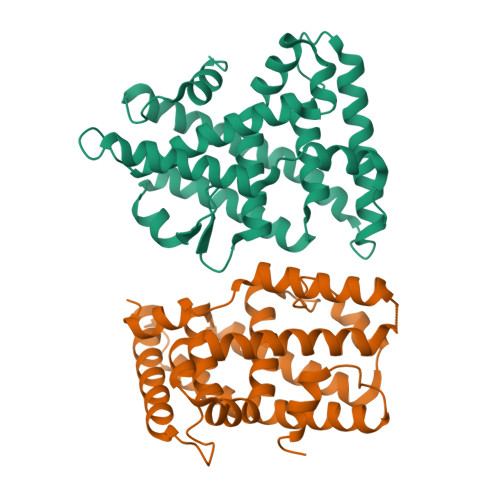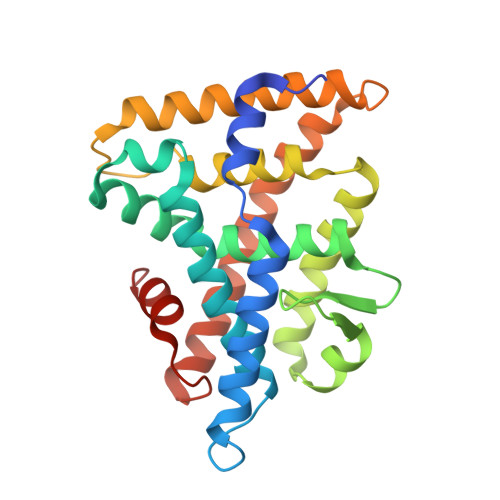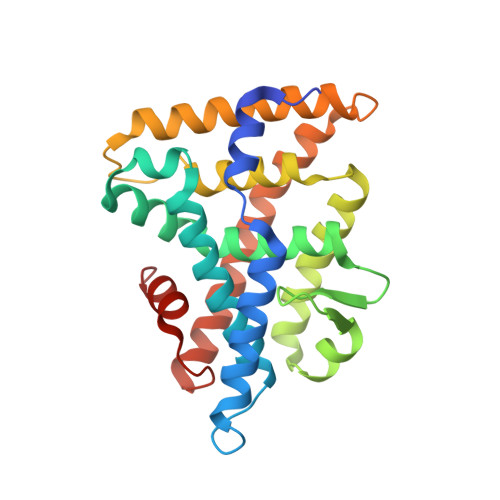Structural basis for ligand-independent activation of the orphan nuclear receptor LRH-1
Sablin, E.P., Krylova, I.N., Fletterick, R.J., Ingraham, H.A.(2003) Mol Cell 11: 1575-1585
- PubMed: 12820970
- DOI: https://doi.org/10.1016/s1097-2765(03)00236-3
- Primary Citation of Related Structures:
1PK5 - PubMed Abstract:
The orphan nuclear receptors SF-1 and LRH-1 are constitutively active, but it remains uncertain whether their activation is hormone dependent. We report the crystal structure of the LRH-1 ligand binding domain to 2.4 A resolution and find the receptor to be a monomer that adopts an active conformation with a large but empty hydrophobic pocket. Adding bulky side chains into this pocket resulted in full or greater activity suggesting that, while LRH-1 could accommodate potential ligands, these are dispensable for basal activity. Constitutive LRH-1 activity appears to be conferred by a distinct structural element consisting of an extended helix 2 that provides an additional layer to the canonical LBD fold. Mutating the conserved arginine in helix 2 reduced LRH-1 receptor activity and coregulator recruitment, consistent with the partial loss-of-function phenotype exhibited by an analogous SF-1 human mutant. These findings illustrate an alternative structural strategy for nuclear receptor stabilization in the absence of ligand binding.
Organizational Affiliation:
Department of Biochemistry and Biophysics, University of California-San Francisco, San Francisco, CA 94143, USA.



















